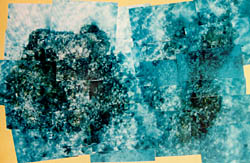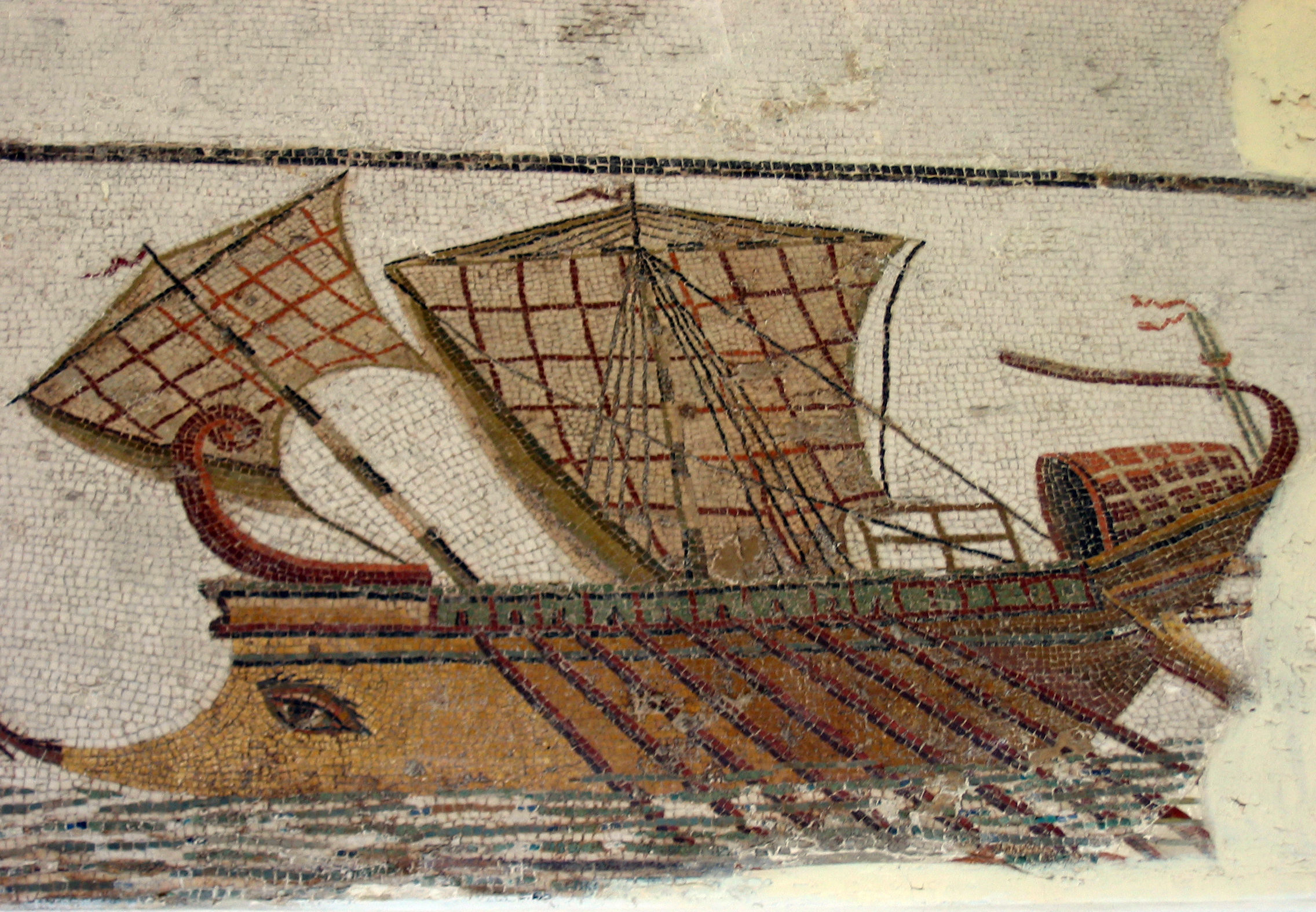|
USS Alligator (1820)
The third USS ''Alligator'' was a schooner in the United States Navy. ''Alligator'' was laid down on 26 June 1820 by the Boston Navy Yard; launched on 2 November 1820; and commissioned in March 1821 – probably on the 26th – with Lieutenant Robert F. Stockton in command. On 6 June 1996, the site of its wreck was added to the U.S. National Register of Historic Places. First anti-slavery patrol When ''Alligator'' put to sea from Boston, Massachusetts on 3 April, she embarked upon a twofold mission. Lt. Stockton had been given command of ''Alligator'' as a result of his dogged efforts to persuade the Secretary of the Navy, Smith Thompson, to pass over several officers senior to him so that, in addition to cruising the west African coast to suppress the slave trade, he might also search for and acquire a stretch of the coast of Africa for the American Colonization Society. The Society had previously established a colony of former American slaves on the coast, but the climate in ... [...More Info...] [...Related Items...] OR: [Wikipedia] [Google] [Baidu] |
Boston Navy Yard
The Boston Navy Yard, originally called the Charlestown Navy Yard and later Boston Naval Shipyard, was one of the oldest shipbuilding facilities in the United States Navy. It was established in 1801 as part of the recent establishment of the new United States Department of the Navy, U.S. Department of the Navy in 1798. After 175 years of military service, it was decommissioned as a naval installation on 1 July 1974. The property is administered by the National Park Service, becoming part of Boston National Historical Park. Enough of the yard remains in operation to support the moored USS Constitution, USS ''Constitution'' ("Old Ironsides") of 1797, built as one of the Original six frigates of the United States Navy, original six heavy frigates for the revived American navy, and the oldest warship still commissioned in the United States Navy and afloat in the world. , a 1943 World War II-era Fletcher-class destroyer, ''Fletcher''-class destroyer serving as a museum ship, ... [...More Info...] [...Related Items...] OR: [Wikipedia] [Google] [Baidu] |
Cape Mesurado
Cape Mesurado, also called Cape Montserrado, is a headland on the coast of Liberia near the capital Monrovia and the mouth of the Saint Paul River. It was named Cape Mesurado by Portuguese sailors in the 1560s. It is the promontory on which African American settlers established the city now called Monrovia on 25 April 1822. There is a lighthouse on Cape Mesurado, located in the Mamba Point neighborhood of Monrovia and in the cape's northwestern portion, that was established in 1855. It is currently inactive, although the Liberian government is seeking financial assistance to restore and reactivate the lighthouse. History Slave trading post Because Cape Mesurado was being used as a base for the illegal slave trade, in 1815 Governor William Maxwell of Sierra Leone sent an armed force there to interfere with it, seizing ships and merchandise and rescuing enslaved Africans who were working in the factories there. For their crimes, the factory owners, Robert Bostock and John Mc ... [...More Info...] [...Related Items...] OR: [Wikipedia] [Google] [Baidu] |
Caribbean
The Caribbean (, ) ( es, El Caribe; french: la Caraïbe; ht, Karayib; nl, De Caraïben) is a region of the Americas that consists of the Caribbean Sea, its islands (some surrounded by the Caribbean Sea and some bordering both the Caribbean Sea and the North Atlantic Ocean) and the surrounding coasts. The region is southeast of the Gulf of Mexico and the North American mainland, east of Central America, and north of South America. Situated largely on the Caribbean Plate, the region has more than 700 islands, islets, reefs and cays (see the list of Caribbean islands). Island arcs delineate the eastern and northern edges of the Caribbean Sea: The Greater Antilles and the Lucayan Archipelago on the north and the Lesser Antilles and the on the south and east (which includes the Leeward Antilles). They form the West Indies with the nearby Lucayan Archipelago (the Bahamas and Turks and Caicos Islands), which are considered to be part of the Caribbean despite not bordering the Caribbe ... [...More Info...] [...Related Items...] OR: [Wikipedia] [Google] [Baidu] |
Piracy
Piracy is an act of robbery or criminal violence by ship or boat-borne attackers upon another ship or a coastal area, typically with the goal of stealing cargo and other valuable goods. Those who conduct acts of piracy are called pirates, vessels used for piracy are pirate ships. The earliest documented instances of piracy were in the 14th century BC, when the Sea Peoples, a group of ocean raiders, attacked the ships of the Aegean and Mediterranean civilisations. Narrow channels which funnel shipping into predictable routes have long created opportunities for piracy, as well as for privateering and commerce raiding. Historic examples include the waters of Gibraltar, the Strait of Malacca, Madagascar, the Gulf of Aden, and the English Channel, whose geographic structures facilitated pirate attacks. The term ''piracy'' generally refers to maritime piracy, although the term has been generalized to refer to acts committed on land, in the air, on computer networks, and (in scie ... [...More Info...] [...Related Items...] OR: [Wikipedia] [Google] [Baidu] |
West Indies
The West Indies is a subregion of North America, surrounded by the North Atlantic Ocean and the Caribbean Sea that includes 13 independent island countries and 18 dependencies and other territories in three major archipelagos: the Greater Antilles, the Lesser Antilles, and the Lucayan Archipelago. The subregion includes all the islands in the Antilles, plus The Bahamas and the Turks and Caicos Islands, which are in the North Atlantic Ocean. Nowadays, the term West Indies is often interchangeable with the term Caribbean, although the latter may also include some Central and South American mainland nations which have Caribbean coastlines, such as Belize, French Guiana, Guyana, and Suriname, as well as the Atlantic island nations of Barbados, Bermuda, and Trinidad and Tobago, all of which are geographically distinct from the three main island groups, but culturally related. Origin and use of the term In 1492, Christopher Columbus became the first European to record his arri ... [...More Info...] [...Related Items...] OR: [Wikipedia] [Google] [Baidu] |
Portuguese Government
, border = Central , image = , caption = , date = , state = Portuguese Republic , address = Official Residence of the Prime MinisterEstrela, Lisbon , appointed = President of the Republic , leader_title = Prime Minister , main_organ = Council of Ministers , ministries = 17 , responsible = Assembly of the Republic , url = The Government of Portugal is one of the four sovereignty bodies of the Portuguese Republic, together with the President of the Republic, the Assembly of the Republic and the courts. It is both the body of sovereignty that conducts the general politics of the country and the superior body of the Portuguese public administration. The Government of Portugal is also referred to as the Government of the Portuguese Republic, the Portuguese Government or simply the Government. The term "constitutional government" or simply "government" also refers to the tea ... [...More Info...] [...Related Items...] OR: [Wikipedia] [Google] [Baidu] |
Pirate
Piracy is an act of robbery or criminal violence by ship or boat-borne attackers upon another ship or a coastal area, typically with the goal of stealing cargo and other valuable goods. Those who conduct acts of piracy are called pirates, vessels used for piracy are pirate ships. The earliest documented instances of piracy were in the 14th century BC, when the Sea Peoples, a group of ocean raiders, attacked the ships of the Aegean and Mediterranean civilisations. Narrow channels which funnel shipping into predictable routes have long created opportunities for piracy, as well as for privateering and commerce raiding. Historic examples include the waters of Gibraltar, the Strait of Malacca, Madagascar, the Gulf of Aden, and the English Channel, whose geographic structures facilitated pirate attacks. The term ''piracy'' generally refers to maritime piracy, although the term has been generalized to refer to acts committed on land, in the air, on computer networks, and (in scien ... [...More Info...] [...Related Items...] OR: [Wikipedia] [Google] [Baidu] |
Marianna Flora
{{disambig ...
Marianna may refer to: * Marianna, Arkansas, USA * Marianna, Florida, USA * Marianna, Pennsylvania, USA * An English spelling for Mariana, Minas Gerais, Brazil * 602 Marianna, an asteroid, number 602 in the minor planet catalog * Marianna (given name), with a list of people of this name See also *Marianne (given name) *Mariana (name) *Maria Anna (other) *Mariano *Marian (given name) *Marian (surname) Marian is the surname of: * Ciobann Marian, Romanian sprint canoeist in the late 1970s * Ferdinand Marian (1902–1946), Austrian actor * Michèle Marian (born 1963), German actress *Radu Marian Radu Marian (; born in 1977) is a Moldavian male s ... [...More Info...] [...Related Items...] OR: [Wikipedia] [Google] [Baidu] |
Mariano Faliero
Mariano is a masculine name from the Romance languages, corresponding to the feminine Mariana. It is an Italian, Spanish and Portuguese variant of the Roman Marianus which derived from Marius, and Marius derived from the Roman god Mars (see also Ares) or from the Latin ''maris'' "male". Mariano and Marian are sometimes seen as a conjunction of the two female names Mary and Ann. This name is an homage to The Virgin Mary, Mother of Jesus. Mariano, as a surname, is of Italian, Spanish and Portuguese origin from the personal name ''Mariano'', from the Latin family name ''Marianus'' (a derivative of the ancient personal name ''Marius'', of Etruscan origin). In the early Christian era it came to be taken as an adjective derived from ''Maria'', and was associated with the cult of the Virgin Mary. It was borne by various early saints, including a 3rd-century martyr in Numibia and a 5th-century hermit of Berry, France. It is also a Sephardic Jewish surname derived from the term Merano. ... [...More Info...] [...Related Items...] OR: [Wikipedia] [Google] [Baidu] |
Striking The Colors
Striking the colors—meaning lowering the flag (the "colors") that signifies a ship's or garrison's allegiance—is a universally recognized indication of surrender, particularly for ships at sea. For a ship, surrender is dated from the time the ensign is struck. In international law "Colours. A national flag (or a battle ensign). The colours . . . are hauled down as a token of submission." International law absolutely requires a ship of war to fly its ensign at the commencement of any hostile acts, i.e., before firing on the enemy. During battle there is no purpose in striking the colors other than to indicate surrender. It was and is an offense to continue to fight after striking one's colors, and an offense to continue to fire on an enemy after she has struck her colors, unless she indicates by some other action, such as continuing to fire or seeking to escape, that she has not truly surrendered. For this reason, striking the colors is conclusive evidence of a surrender ha ... [...More Info...] [...Related Items...] OR: [Wikipedia] [Google] [Baidu] |






